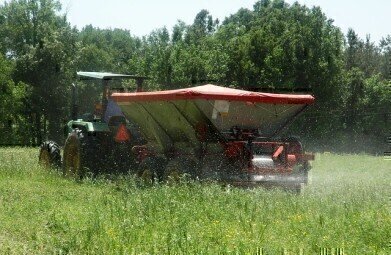Water/Wastewater
What Is Ammonia Pollution?
Jul 27 2019
Almost two-thirds (61.3%) of Britain’s land area is affected by unsafe concentrations of ammonia pollution, according to a new report commissioned by the government. The vast majority of ammonia emissions come from agriculture, where it is released naturally by livestock or in the form of fertilisers sprayed onto fields and crops.
However, excess ammonia can often find its way into rivers and waterways through agricultural run-off, where it can have a detrimental impact on the flora and fauna living in these underwater habitats. By limiting the growth of such species as lichen, ammonia pollution can have a potentially disastrous knock-on effect on organisms further up the food chain.
By the numbers
The government report, undertaken and published by the Department for Environment, Food and Rural Affairs (DEFRA), concentrated on the period between 2014 and 2016 (the most recent data available). It concluded that a whopping 85.3% of English territory was exposed to above-critical levels of ammonia and that figure was even higher in Northern Ireland at 87.5%, while Wales came in at 56.3%. Scotland was the only home nation to show relatively stable exposure, at just 17.8%.
The news becomes even more concerning when protected areas that are regarded as particularly sensitive are the subject of focus. 95% of sites of special scientific interest, special protected areas and special areas of conservation in England suffer from unsafe ammonia contamination, with Wales (89%) and Northern Ireland (85%) only performing slightly better. Scotland again came out on top with 40% of sensitive sites exposed to excessive ammonia.
Chain reaction
In incredibly high concentrations, ammonia can cause harm to humans, such as discomfort and stinging in the eyes, nose and throat or even death in extreme circumstances. However, by far the most worrying aspect of the research is the more insidious effect it has on the food chain as a whole. Given the complex nature of environmental matrices, a detrimental impact on something as small and seemingly insignificant as lichen or moss can have huge ramifications further down the line.
That’s because tiny invertebrates rely on such species for their habitats. In turn, these animals are eaten by birds as a primary food source, endangering their own survival, and the knock-on effect continues further up the food chain. There is a similar effect on grasslands and fungi that are also adversely affected by high concentrations of the gas, as well.
Agriculture the offender
Statistics show that agriculture is the principal offender when it comes to ammonia emissions, responsible for 87% of them in 2017. Approximately half of those came from animals, with the other half created by the use of nitrogen fertiliser. When heavy rainfall and flooding affects farmlands that have been treated to such fertilisers, they can run-off into waterways in the surrounding area and cause an unnatural imbalance to the ecosystems therein.
One potential solution to the problem could be the use of digestate as an organic fertiliser. Digestate has the advantage that the ammonia contained within it is more readily absorbed by the soil, meaning it has less chance of leaching off into undesirable places. In any case, the government has come under criticism for the absence of any concrete plans to tackle the issue of ammonia emissions, despite its own research highlighting the problem.
Events
Apr 22 2024 Hannover, Germany
Apr 23 2024 Kuala Lumpur, Malaysia
Apr 24 2024 Sao Paulo, Brasil
May 05 2024 Seville, Spain
May 13 2024 Munich, Germany













